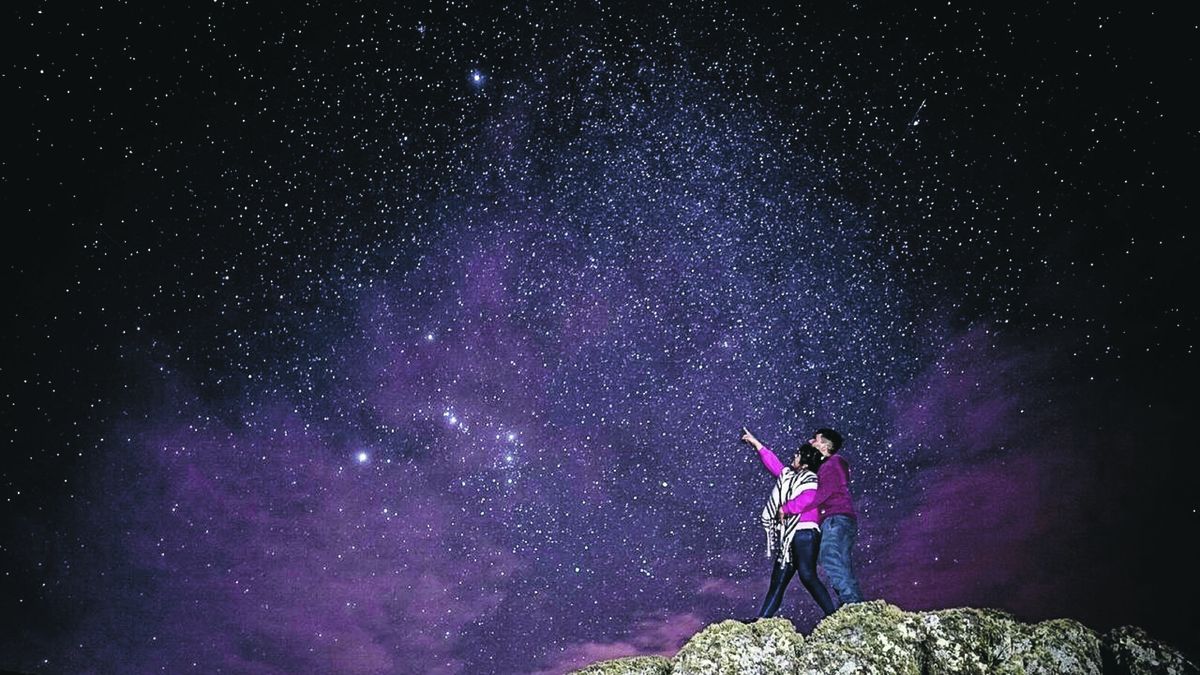saint Louis
The activity is strong in areas with dark nights and clear skies, such as San Luis, which offers it in the Astronomical Park of La Punta, 20 kilometers from its capital, and in Villa de Merlo.
In the first, the activities combine fun and science for all ages in its “astronomical nights”, when the sky is observed with specialized telescopes, particularly during singular events such as eclipses or meteor showers.
In addition, the Park organizes guided visits to the Solar de las Miradas, which represents the first naked eye observatory, made up of instruments prior to the invention of the telescope.
In Merlo, the outstanding proposal is the Mirador del Cielo astronomical observatory, with telescopes that allow visitors to photograph celestial bodies with their cell phones, and observations are also made from natural viewpoints or during night trekking, with portable telescopes.
mendoza
Also in Cuyo, Mendoza proposes various astrotourism activities, such as visits to the Malargüe planetarium, in the south of the province, where the Pierre Auger Cosmic Ray Observatory and the Malargüe Planetary Complex are located, which is a benchmark in scientific communication at the national level.
The Permanent Exhibition “Mission Rosetta” works there, held this year between the local Municipality and the European Space Agency, while the planetarium has a room for 65 people in its dome, in which interactive visualizations of the universe are projected.
Tucuman
In the Calchaquí Valleys of Tucumán, the Ampimpa Astronomical Observatory is a unique option on the continent that, together with space observation, phenomena such as meteor showers and astronomical tours, includes lodging, traditional gastronomy and regional wine tastings.
The place is managed by an NGO that also offers lodging at the Observatory, which was declared of national tourist interest by the Ministry of Tourism and Sports.
currents
In the Esteros del Iberá, which in its 750,000 hectares has no light pollution, astrotourism is developed by a group of certified local guides from the Starlight Iberá Project, who operate from the access portals to this protected area of Corrientes.
Mariana Balestrini, director of the Yetapá Foundation -one of the promoters of the project- said that these guides “share their knowledge about the moon, the constellations, shooting stars and other mysteries of the universe, and also their stories, full of wisdom and beauty about the magical past of the Iberá nights”.
Patagonia
In Patagonia, Chubut consolidates astrotourism in several of its destinations, such as Trelew, whose Astronomical Center located in the upper area invites you to a “Cosmic walk through the Chubut sky” from its observatory.
Further north, Puerto Madryn has a provider dedicated to astrotourism that organizes excursions through the fields of Península Valdés to survey the sky in areas without light pollution.
In the northwest of Santa Cruz, in the Patagonia Park, there is an observatory made of stone, with a design inspired by the sacred geometry with which the Andean peoples built their cities, based on the observation of the sky and the mathematical relationships between the axes of the South Cross.
In this observatory, located in the Portal Cañadón Pinturas (sector managed by the Fundación Rewilding Argentina), you circulate counterclockwise, with the movement of the Sun, to follow its path in the southern hemisphere and achieve a good observation of the cosmos.
This NGO also plans to set up a space observatory in the neighboring Cueva de las Manos Provincial Park.
In the rural area Ñirihuau Arriba, 23 kilometers from Bariloche, the astronomer Daniel Chiesa built an observatory that since 2021 has received tourists from all over the world, “some interested in knowing the southern sky, others in having an experience different from traditional activities” , said.
“The experience consists of an observation first with the naked eye, to recognize stars and constellations, and then use the telescope and observe star clusters, nebulae, galaxies, the moon and the planets if they are in a favorable situation,” he added, and clarified that “when there are special events such as eclipses, the observatory remains open”.
Between rivers
Another initiative linked to the relationship between indigenous people and the cosmos is “Tape Kue” (Old Road, in Guaraní), in Gualeguaychú, Entre Ríos, which proposes “observing the sky with the naked eye, in the same way that our ancestors did.” , the Chaná and the Guarani”, said one of its promoters, Samuel Moreyra, a hotel and astro-tourism technician.
Moreyra explained that more than 2,000 years ago, these groups “perceived the earth as an island or continent floating in an immense and flat ocean of darkness, and according to them the first inhabitants had descended from the stars along a path that until the day of today it can be seen with the naked eye: the Tape Kue”.
Guided tours take place once a month in the Gualeguaychú Hot Springs and in the Senderos del Monte Nature Reserve, where in addition to observing the cosmos, allusive stories and legends are told and at the end they taste typical food, with wines and craft beers, to also promote the local gastronomy.
Buenos Aires
In the Sierras de la Ventana region of Buenos Aires (Tornquist district) there is an astrotourism offer in the towns of San Andrés de la Sierra and Sierra de la Ventana.
In the first case, telescopes are used from a restaurant located at the foot of the Ventania cordon, without street lighting, by the amateur astronomer Javier Gómez, who used to do it in a 4×4 truck, with which he took the astrotourists “until the Benjamin hill, after crossing streams, valleys and ravines”, he commented.
In Sierra de la Ventana, astronomical tourism takes place on the Ceferino hill, an elevation of 320 meters above sea level also called “hill of love”, in Villa Arcadia.
Tour guide Pablo Parotti, in charge of the experience, explained to this agency that they do it “with the naked eye, despite the fact that I have a telescope that makes sense in seeing the Moon,” and added that they also use “other implements, such as virtual reality glasses, used with a program that is a ‘walk on the moon’”.
Source: Ambito
David William is a talented author who has made a name for himself in the world of writing. He is a professional author who writes on a wide range of topics, from general interest to opinion news. David is currently working as a writer at 24 hours worlds where he brings his unique perspective and in-depth research to his articles, making them both informative and engaging.




